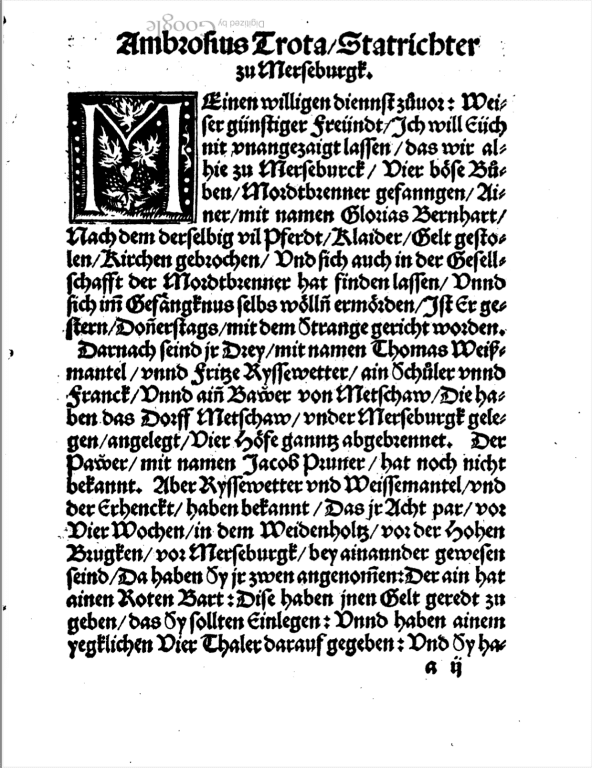I have written a good deal in recent years about the impact of climate on religion, about how successive climate crises and disasters have caused wars and famines, and new religious movements have emerged from the ensuing chaos. This is the theme of my recent book Climate, Catastrophe, and Faith: How Changes in Climate Drive Religious Upheaval. To illustrate this idea, and what it means for how we write the history of religion, let me offer one example – not necessarily the most significant, but one that benefits from being highly specific. I will look at one focused historical moment, namely the pivotal year of 1540.
That year marked a significant transition in the struggles of the Reformation, which had begun two decades before. On the Catholic side, the year exemplified a new determination in the reform movement aimed at reestablishing Papal control, and in effect the start of the Counter-Reformation. The Papacy now recognized the Jesuit order, a controversial process that had been in the works for some time. The order became the vanguard of the attempt to recapture Europe for the church, and by the 1620s, it had more than 15,000 members. The same year, 1540, was also when the Spanish Inquisition executed its first Protestant victim.
But the greatest landmark of that year occurred in the city of Geneva, where city authorities were seeking to attract John Calvin back to the city he had abandoned. He accepted, and in the following year established a draconian theocratic regime, a City of God that was at once an example and a terror to the Christian world. Until Calvin’s death in 1564, radical Geneva served as a subversive symbol comparable to what Bolshevik Russia was for the world’s leftists after 1917. That was the basis for the Calvinist movement, which soon became an enormously important force in European politics and culture. Outside Geneva, the Reformation movement won great victories in the ongoing confessional struggle, including the recruitment of Sweden to the cause in 1544.
In short, religious controversies now entered a new age of militant confrontation and sweeping radicalism.
In understanding these trends, it surely helps to appreciate the climate context. In 1540, Europe experienced a drought and heatwave of terrifying proportions, which in fact are still hard to interpret by existing climate models, and which left their impact for several years. (Do read the description of the horrific year of 1540 at the Wikipedia page to which I have just linked). This was a once-in-500-year event. Summer weather was as hot as any recorded in modern times, while rain virtually ceased for much of that year. As a modern historian of climate notes, “The heat of the summer of 1540 is the best-documented event of the sixteenth century and can be viewed as one of the major events of the millennium.” Rivers great and small dried up in this crushing megadrought, and shortages of drinking water drove people to seek sources even less hygienic than usual, resulting in the spread of serious maladies. In the cultural context of the time, the disaster inevitably had religious consequences, aggravating already bitter religious tensions, stirring paranoid accusations, and galvanizing militancy. Very, very, thankfully, the catastrophe was short-lived. If it had gone on for a decade or two, there is no real way that European states and societies would have survived intact.
In the context of Geneva itself, what made Calvin’s authoritarian powers possible was the desperate need to feed a city overcome by the effects of drought and the resulting famines and epidemics, which continued through the mid-1540s. Not until 1547 did grain prices return to anything like normal conditions, by which point Calvin’s authority was absolute. It is difficult to imagine such a dictatorial revolution being accepted except in the context of the clear signs of divine wrath that had been made so evident during the great drying.
As always, such climate-driven disasters sparked other conflicts and excited widespread popular terrors. When crops failed, when herds died, when plague ravished the land, when storms sank ships, the common and predictable human response was to find the malignant individuals or groups who were causing these phenomena and tormenting ordinary decent people. In the context of the time, this generally meant those of rival religious faiths.
In 1540, costly fires proliferated across Europe, as we might well expect in a time of wood construction, and conditions of extreme dryness. In the context of the time, however, human intervention seemed a more natural and acceptable interpretation. Organized bands of (imaginary) arsonists—in German, the Mordbrenner, or murder-burners—became a primary source of social and religious terror. When the Imperial Diet met that year in Regensburg, Protestants urged the emperor to act against the elaborate conspiracy to burn their cities, villages, and forests, part of a diabolical Catholic scheme masterminded by the Pope and leading aristocrats. Alternatively, perhaps Anabaptists were starting the fires. In 1540, magistrate Ambrosius Trota published an investigator’s guide to the arsonist networks and their secret signs and codes. The book was likely printed in Wittenberg and would have had Luther’s approval. Jews (or possibly Muslims) were suspected in other related plots to spread plague, and Geneva was one of many centers to prosecute deliberate “plague-spreaders.”
That is a heavily abbreviated story of one crisis in one particular year. But if we omit that climate context, we are missing so much of what is crucial to the history of European religion in that critical century of religious transformation.
For the “Anabaptist Panic” focused on 1540, see Kat Hill, Baptism, Brotherhood, and Belief in Reformation Germany: Anabaptism and Lutheranism, 1525-1585 (Oxford University Press, 2015).














